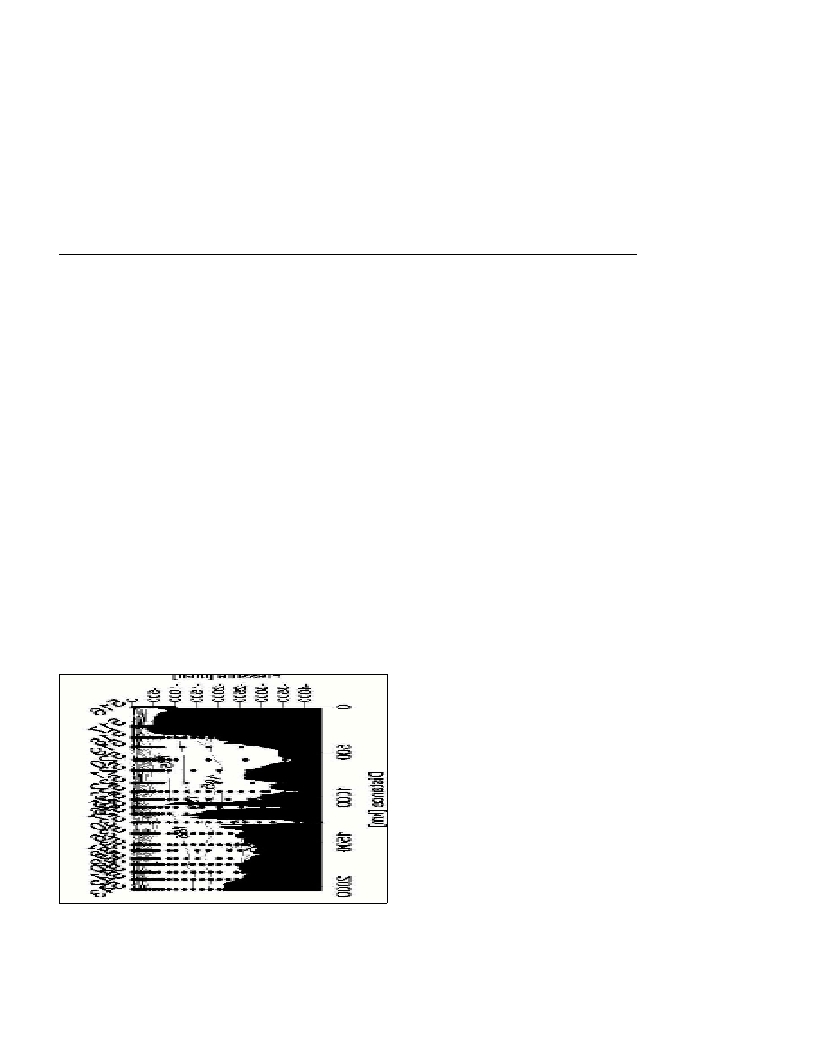Rapp. Comm. int. Mer Médit., 37,2004
137
RESULTS OF METEOR CRUISE M51/2 IN 2001
W. Roether
1*
, B. Klein
1
, B. B. Manca
2
, N. Kress
3
1
Institut für Umweltphysik, Univ. Bremen, P.O. Box 330 440, D 29344 Bremen, Germany
* wroether@physik.uni-bremen.de ; bklein@physik.uni-bremen.de
2
OGS, Borgo Grotta Gigante 42/c, 34010 Sgonico, Italy - bmanca@ogs.trieste.it
3
IOLR, P.O. Box 8030, Tel Shikmona, Haifa, 31080, Israel - nurit@ocean.org.il
Abstract
Cruise M51/2, 2001, provided an Eastern Mediterranean hydrographic survey, as a follow-up to previous, similar surveys in 1987, 1995,
and 1999. The aim was to provide an additional snapshot of the evolving Eastern Mediterranean Transient (EMT). The data presented will
show that by 2001 the deep and intermediate waters had relaxed after the EMT peak, but that the hydrography and circulation of the waters
were still very different from the pre-EMT situation.
Keywords: Eastern Mediterranean Transient, deep waters, intermediate waters, hydrographic survey, tracer survey
Cruise M51/2 of M
ETEOR
, 18 October-11 November 2001, carried
out a modest-resolution hydrographic survey (including the
measurement of oxygen/nutrients and of transient tracers) of the
Eastern Mediterranean, providing another snapshot of the EMT of the
deep and intermediate waters. An oxygen section along the Eastern
Mediterranean for 2001 is shown in Fig. 1. In comparison with 1995,
when the EMT, caused by a bottom-concentrated intrusion of Aegean
waters of enhanced density, was fully developed [1], the deep waters
have been gradually returning toward horizontal homogeneity, but the
basic structure of the 2001 distribution is still far different from that
of the pre-EMT situation: The oxygen minimum range in 2001 is
rather more ventilated, vertically more restricted and shifted to
shallower depth, and in the Levantine it is underlain by more
oxygenated waters, while a signature of the Adriatic deep water
source at the base of the western continental slope is missing. The
findings confirm absence of recent bottom water formation [2, 3].
While prior to the EMT the near-bottom ?ow was essentially
eastward, feeding upwelling over the entire basin, the 2001 property
distributions indicate westward ?ow over the deep sills in the Cretan
Passage to both sides of the Mid-Mediterranean Ridge. The reason is
a decreasing near-bottom water density westward. The Cretan Sea
(southern Aegean) still contains rather dense and well ventilated
water, the upper boundary of which, however, allows out?ow only
southeastward through the deeper Kasos Strait but not westward
through Antikithera Strait [see also 3]. The property distributions
furthermore confirm a cyclonic deep recirculation of the Ionian Sea
[2], probably driven both by the dense waters of Aegean origin and by
more recent Adriatic out?ow that settled at comparatively shallower
depths. Furthermore, transfer time scales are obtained using the tracer
data.
References
[1]Roether W., Manca B. B., Klein B., Bregant D., Georgopoulos D.,
Beitzel V., Kovacevic V., and Lucchetta A, 1996. Recent changes in
Mediterranean deep waters. Science, 271: 333-335.
[2]Manca B. B., Budillon G., Scarazzato P., and Ursella L., 2003.
Evolution of dynamics in the eastern Mediterranean affecting water mass
Structures and properties in the Ionian and Adriatic Seas. J. Geophys. Res.,
108 (C9): 8102, doi: 10.1029/2002JC001664.
[3]Theocharis A., Nittis K., Klein B., and Roether W., 2002. Evolution
and status of the Eastern Mediterranean Transient (1997-1999). J. Mar.
Systems, 33-34: 91-116.
Fig. 1. Oxgen section (mmol/kg), cruise M51/2, 2001, from the Sicily
channel (left) to off the Libanese coast (right).

